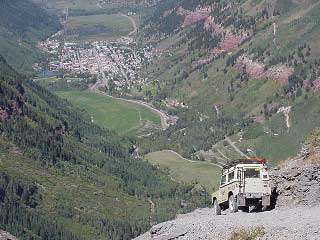|
|
|
 |
The Re-build |  |
| Something to start with Because I'm in the auto body business, I know what restorations can entail. I would spend some time and find the nicest truck I could with the money I had. I figured for every dollar spend going in, I would save three on the other end. So after spending weeks pouring over print and web adds, I settled on a Series III truck outside Richmond Virginia. Ten hours and five hundred miles later I found my self crawling around a badly beaten, rusted and abused hulk of an old truck. Not wanting to bounce home empty, and after much negotiations, we struck a deal and I headed north with the old girl and a lighter wallet. |
 |
|
Now that it's home, let's see what we've got. The frame suffered from a similar condition. It had been patched numerous times and most of them had failed. When I stopped driving my new pride and joy, the right side of the bumper had risen a few inches thanks to a break in the frame rail directly about the front axle. The frame, among everything else, would have to be replaced as well. I was faced with not just a "frame-off" restoration, but a NEW frame restoration. Those of you familiar with Land Rovers will not find this too worrying, but at this point, I wondered what I had gotten myself in to! After a few phone calls, my engine of choice was found and it's shipment secured. Twenty-four hours and nine hundred dollars later I had a 1981 Mercedes 2.4L diesel with 109K miles sitting in my driveway. From a standard shift car, I was delighted to find a brand-new clutch and pressure plate bolted to the backside. This was to prove to be a very simple engine to adapt to my new truck. A feed and return fuel line, three wires and a throttle cable was all that was necessary to run this simplest of engines. There were, however, a few things that had to be made and changed for this new engine to go into a Land Rover. The main thing was an adapter plate to mate the Mercedes engine to the Rover transmission. It was built in a day from a single piece of 6061 aluminum plate. Care had to be taken to assure a precise centering of the input shaft to the flywheel and clutch. The Rover input shaft matted to the Mercedes flywheel, clutch and pressure plate with very little modification to the clutch plate. The pilot bearing was machined from a piece of bearing bronze. The outside corner of the flywheel had to be cut slightly to fit inside the Rover bell housing. With these things done, the two came together with little problem. The oil filter housing was another thing that needed some modification. Because of its placement far back and away from the engine block, it was going to interfere with the bulkhead. There are two mechanical valves inside this housing that perform some important functions that I wanted to keep. One is a high-pressure relief valve and the other is a thermatic valve that bypasses the oil filter until the engine reaches operating temperature. The top portion of this housing had to be removed, capped off and taped for oil lines leading to a remote filter location. It’s a straightforward change, but care must be taken not to damage the two enclosed valves. They are plastic and must be removed before any welding is done. The motor mounts had to be fabricated and were done so with the engine in place. Again, very straight forward and simple to do with some scrap steel and a mig welder. The only other thing that had to be modified in regards to the engine was the oil pan. The right side corner had to be removed and re-shaped to make room for the front differential housing. With the help of parabolic springs and military shackles, I have no clearance problems even over the toughest terrain. |
|